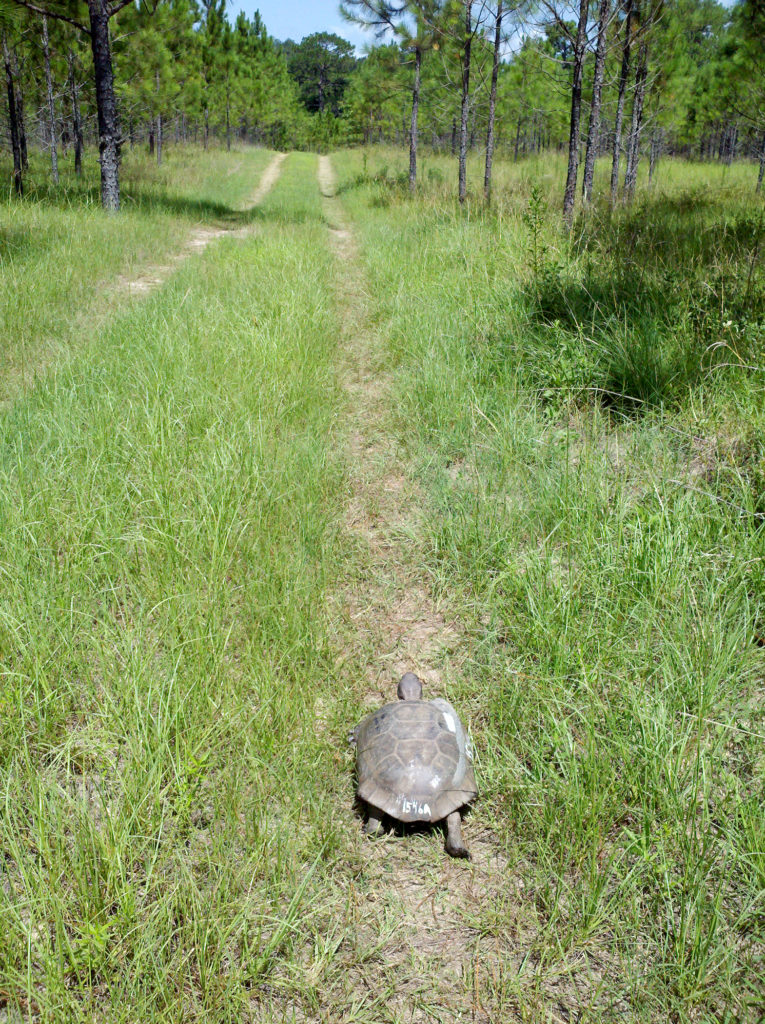Assumptions about how much and how far chronically ill gopher tortoises move around could be wrong, according to a new UGA study. Research that followed the movements of tortoises with upper respiratory tract diseases showed the ailing reptiles migrating farther and possibly spreading diseases more than originally thought.
Gopher tortoises are native to the southeastern U.S., and they are considered a keystone species because the burrows they make provide refuge for hundreds of other species, including frogs and snakes. Not only have tortoise populations been reduced by extensive habitat loss, but infections from these respiratory diseases may be contributing to population declines.
“Some of these tortoises are so sick one wouldn’t think that they would be able to move around much, but they can,” said Jessica McGuire, who led the study while earning her doctorate at the Warnell School of Forestry and Natural Resources. “We didn’t know much about their behavior when they were symptomatic, prior to this study. The movement we documented could put adjacent populations at risk.”
McGuire, now with the Georgia Department of Natural Resources, and other researchers recently published two articles in the Journal of Wildlife Diseases about the prevalence of upper respiratory tract diseases in gopher tortoises and how these illnesses affect their movements.
Researchers had hypothesized that chronically ill tortoises would not move around as much as their healthy brethren, but McGuire used radio tracking to monitor 40 adult tortoises from a long-term study site at the Jones Ecological Research Center at Ichauway in southwest Georgia to find out how much and how far they really move.
Of the tortoises being tracked, 30 adults tested positive for disease but were either asymptomatic or had mild symptoms, while 10 showed severe signs of the illness.
“We were surprised to see some of the severely symptomatic tortoises moving so far,” McGuire said. “Out of the 10 severe tortoises tracked, six moved great distances. For example, one of these tortoises traveled more than a mile in a day. We are not really sure why a sick animal would make these kinds of movements. One idea is that they lose their sense of smell due to severe swelling of the nasal passages, which may impair their ability to navigate.”
